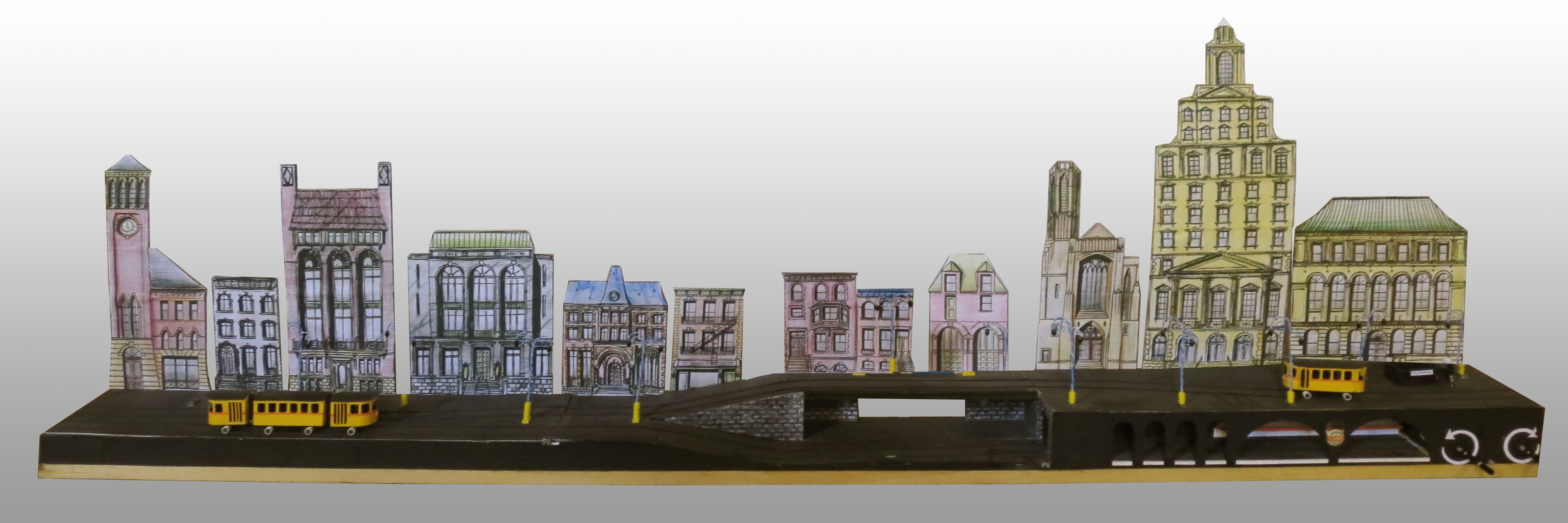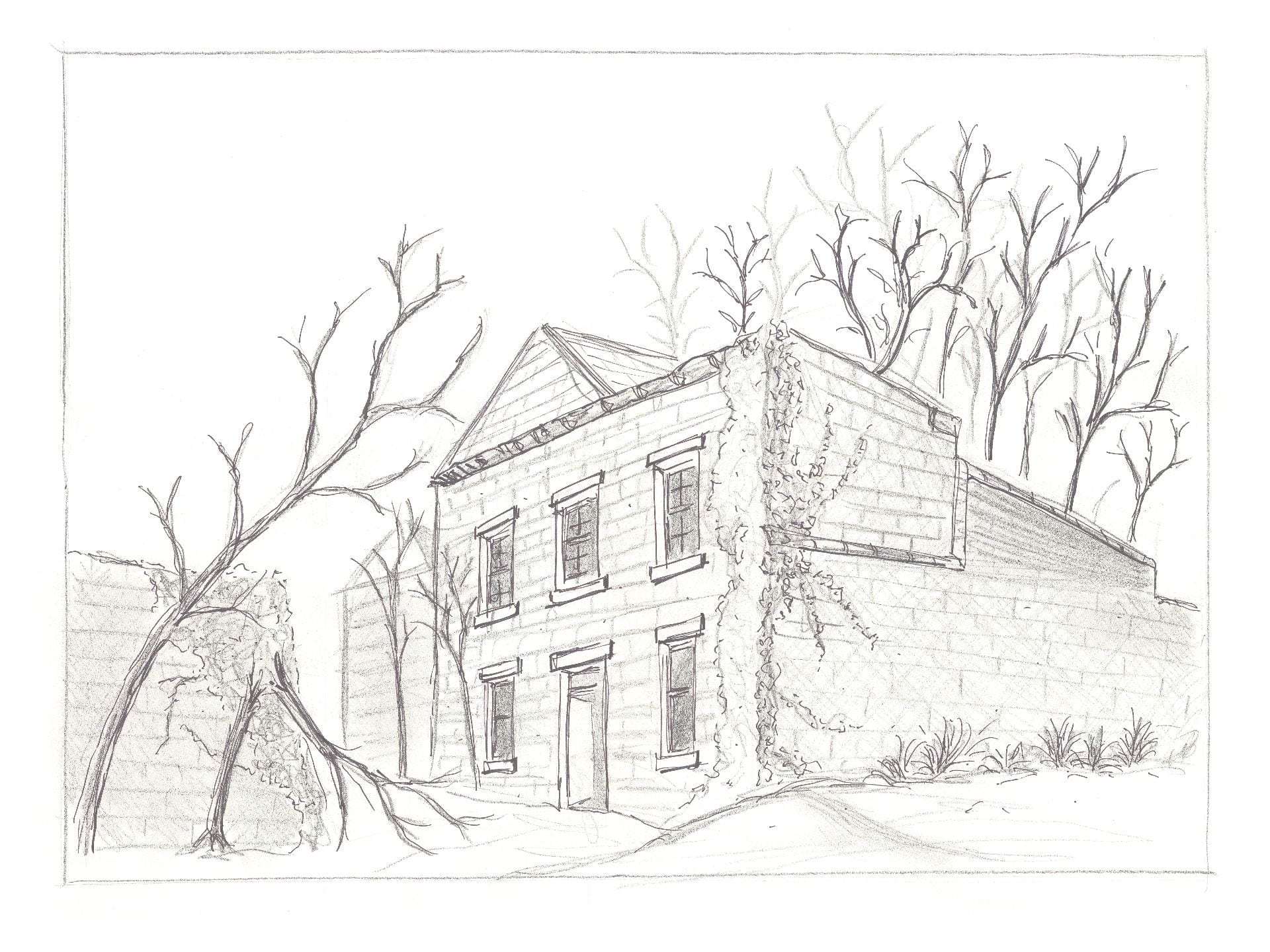As featured by NJ.com in spring 2019
Update: Following a case filed by New Jersey Appleseed Public Interest Law Center on behalf of PLANewark, Edison Parking admitted that they demolished this building without seeking proper permission from city and state agencies. Edison was in negotations out of court with PLANewark about ways to mitigate the damage they caused.
.
On a warm Sunday in August 2014, bulldozers started tearing away at a historic, turn-of-the-century loft space. Although the first floor was sealed with cinder blocks, the upper floor was adorned with large Chicago-style windows, intricate white terracotta carvings, and Greco-Roman ornament. The building was so sturdy it took demolition crews hours of pounding and smashing to weaken the structure. When the outside walls fell, they exposed sturdy concrete floors over a foot thick and thousands of steel re-bars for added durability.
Situated on the corner of Washington and Bleecker Street, the two-story structure stood in the heart of the James Street Commons Historic District. Normally, such a structure would never be demolished but… The property’s owner is Edison ParkFast, one of the largest landowners in Newark and a company with a business model linked to gentrification and lawlessness. Its owner, Jerry Gottesman, spent $1 million to oppose the High Line because he feared the public park would decrease his property values. Gottesman’s company also owns Manhattan Mini Storage, whose billboards in New York City cynically read – “Bloomberg is gone. Time to put the bikes away.” To profit from blight, this landbanker buys cheap land, waits for its value to improve, and then profits without investing anything to improve the community. While waiting, Edison ParkFast generates huge revenue from surface parking – often ten dollars an hour for one parking spot. Multiply the results by 60,000 parking spots daily!
.

Illegal Demolition









Illegal Demolition
.
In fact, demolition is in Edison’s selfish self-interest. Real estate is taxed according to the value of the structure, not the land. Therefore, Edison’s huge land holdings share almost no tax burden. Meanwhile, developed properties – whose residents might have invested thousands in upkeep and preservation – are taxed disproportionately higher than Edison’s lots. Edison doesn’t even pay for storm water runoff, which is calculated by a property’s water consumption. In other words, the public subsidizes surface parking. Under the current land-use policy that financially incentivizes demolition, Edison’s greed and urban blight is rewarded.
Edison’s evasion of the law is a high art. In this case, the building Edison destroyed is on the National Register of Historic Places and is protected by local and Federal law. All the same, this parking mongol quietly acquired surrounding land. Then, Edison removed the historic property’s windows and poked holes in its roof to cause water damage. Finally, Edison hired an unlicensed engineer to inspect the property. Edison then obtained a demolition permit from Newark’s corrupt Engineering Department, without approval from the Landmarks and Historic Preservation Commission. In one weekend, this historic building and its many stories were purged from history.
When the public noticed the illegal demolition, it was too late. The Landmarks Commission called an emergency meeting to discuss the crisis. Sitting directly behind me was a heavy suburban lady, working for Edison. Upon learning no city code enforcement officers were present, she whispered under her breath, “Yes! Excellent!” and promptly left the meeting.
Joined by many outraged citizens, I spoke before the Commission:
.
My name is Myles. I am a life long Newark resident.
Parking is a travesty. I have seen:
– Too many viable buildings demolished in the name of progress.
– Too many parking lots erected to serve commuters indifferent to Newark.
– Too many vacant lots awaiting non-existent development.
This blight of so-called “development” must stop. Newark is a city with a strong history. Its buildings are testament to that. Yet, unscrupulous developers’ utter disrespect for our heritage threatens our urban identity.
Newark has future potential. Its buildings are testament to that. Yet, unscrupulous land banking slows down the development our city so desperately needs.
Newark is a lawless city. Its buildings are testament to that:
– Parking developers have no right to illegally demolish historic structures. They do so anyway.
– Parking developers have no right to channel millions of gallons of storm water runoff without paying a cent. They do so anyway.
– Parking developers are not above the law. They think they are anyway.
Those who break the law must be held accountable.
Letting unscrupulous destruction continue without government oversight is permitting lawlessness to continue.
Letting Edison Parking demolish our architectural heritage is telling them, “Go ahead, do it again.”
A thief does not think he will be caught. A thief does not stop until he is punished.
I realize Newark’s Historic Preservation Commission does not have the power to levy fines or jail these surface-parking criminals. But this commission has:
– The power to lobby for stronger legislation that will protect our neighborhoods.
– The power to prevent continued parking construction.
– The power to force corrupt city officials to do their job.
I admire the invaluable service you have rendered this city so far. I encourage you to do more. I encourage you to fight these ignorant developers. Even if victories may be Pyrrhic, at least there is the comforting knowledge that one fought greed, corruption, lawlessness, and ignorance.
.

Progress Inc.

Polhemus House demolition
.
In 1978, the James Street Commons were made a historic district. In the Federal approval process, each building was meticulously identified and photographed. Each time I review these images, I remember demolished buildings and our lost heritage. Edison ParkFast is not alone. Other institutions in this historic district also contribute to the destruction of public assets and, therefore, to the loss of their own city’s identity. For instance, a few years ago, Rutgers University schemed a land-swap with Jerry Gottesman. Rutgers owned a historic Art Deco building from the 1930s. Edison owned a parking lot. Rutgers exchanged their building for the parking lot, knowing full well this transaction would doom the old building to rubble. As a result of this short-sighted practice and the frequent demolition of Newark’s architectural fabric, Rutgers has painfully transformed itself into an inferior commuter school, with inadequate housing in the immediate area for students and faculty to live and walk to work.
.

Commercial buildings on Washington Street (demolished by Edison ParkFast)

Meatpacking district (demolished by so-called developer Marc Berson

Plane Street homes (demolished by Edison ParkFast)

Orange Street homes -(demolished by Rutgers University)

School for the Deaf (demolished by Rutgers University)

High Street warehouses (demolished by the New Jersey Institute of Technology)

1880s fire alarm box (removed by the City of Newark)

Eagle Street brownstones (demolished by Rutgers University)

1828 Lloyd House (sold by preservationists to Rutgers University and consequently demolished without public approval))

45 Bleecker Street (demolished by Rutgers University)


























 Left to right: Broad Street Station, Polhemus House, YWCA Building, Newark Museum, Ballantine House,
Left to right: Broad Street Station, Polhemus House, YWCA Building, Newark Museum, Ballantine House,




















































 Newark Skyline from the Passaic River
Newark Skyline from the Passaic River Newark Airport
Newark Airport Panorama of Newark from Roof of 810 Broad Street
Panorama of Newark from Roof of 810 Broad Street

